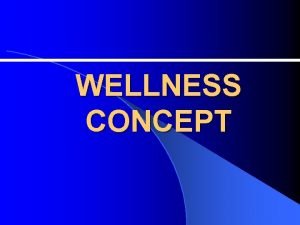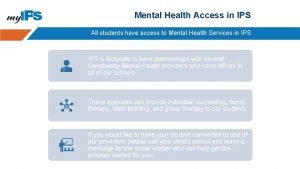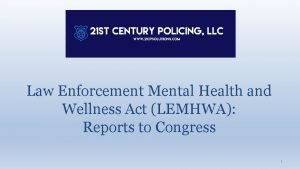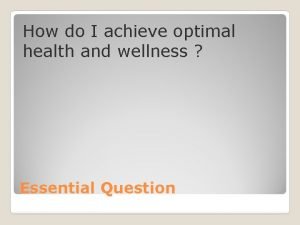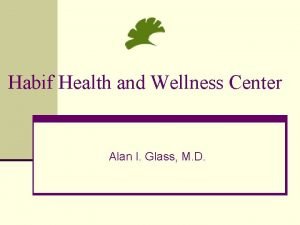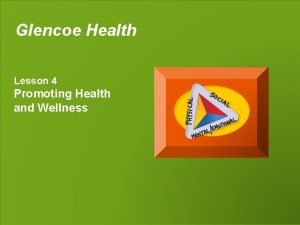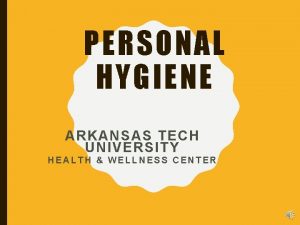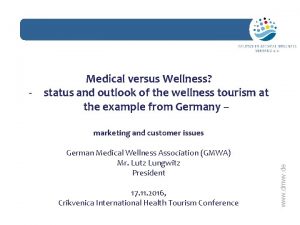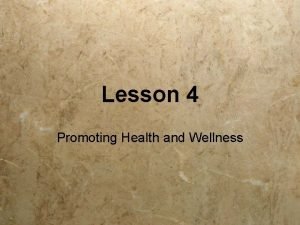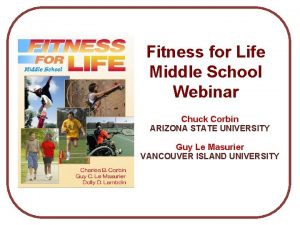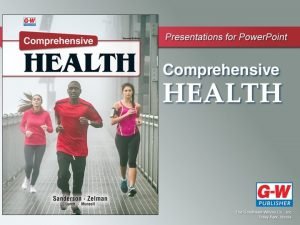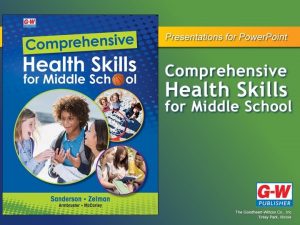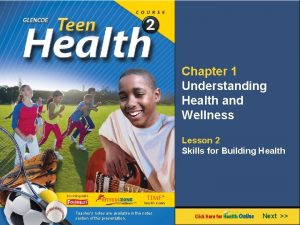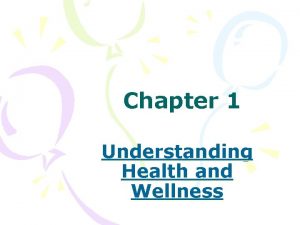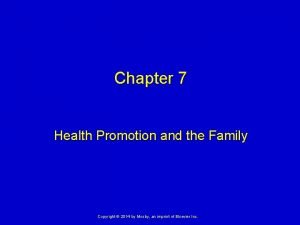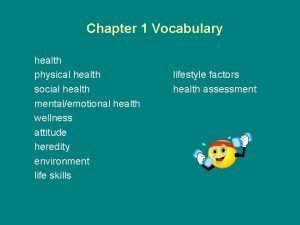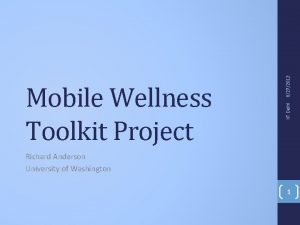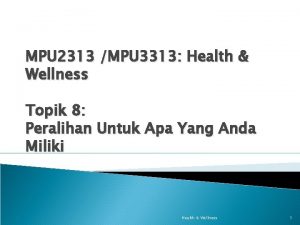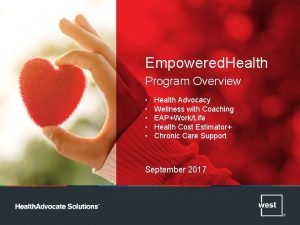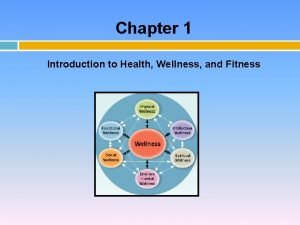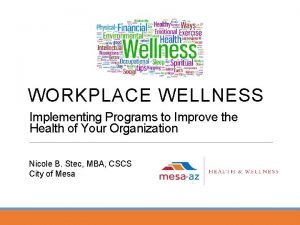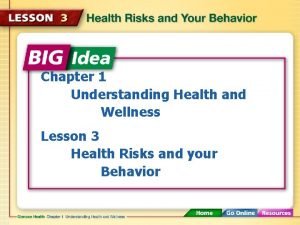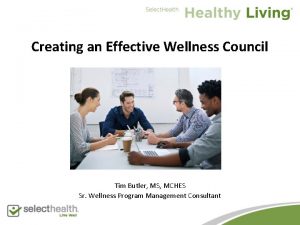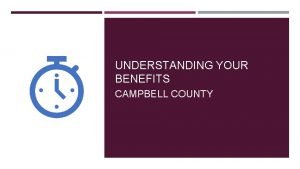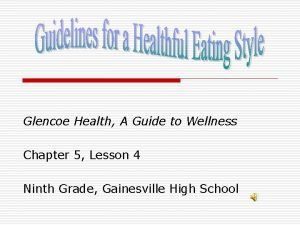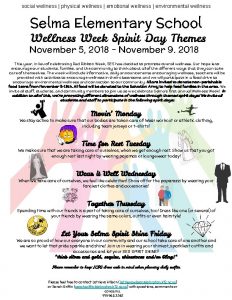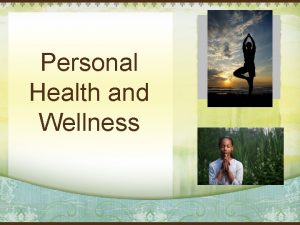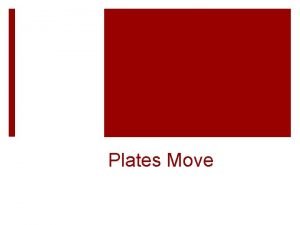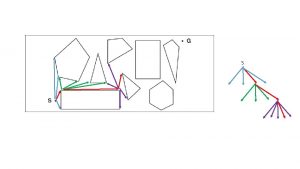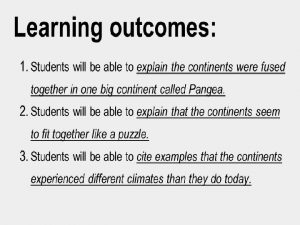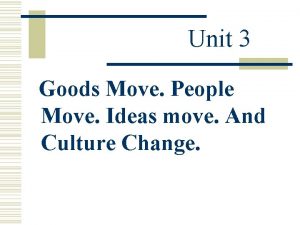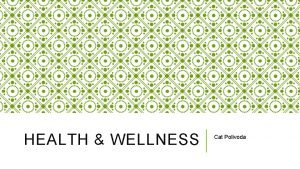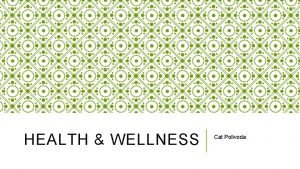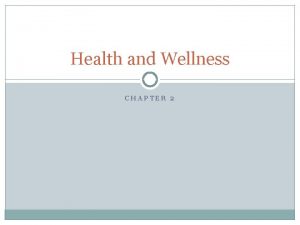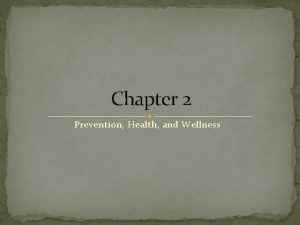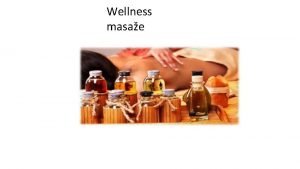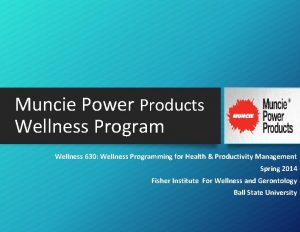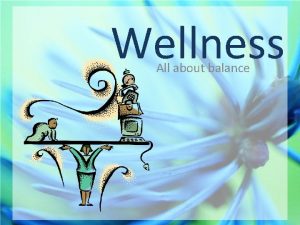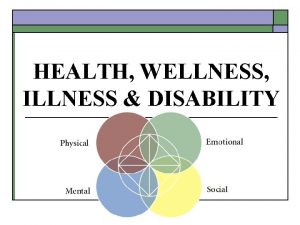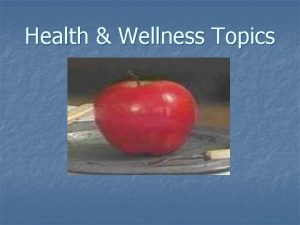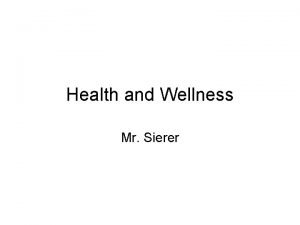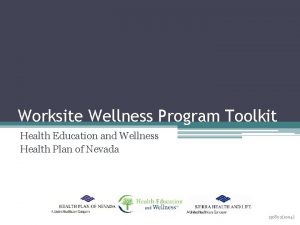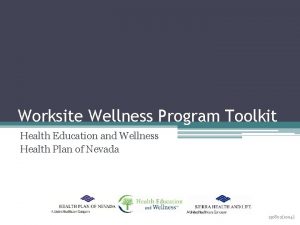MOVE Wellness Group What is Health and Wellness






































![Resources World Health Organization. The determinants of health. [accessed July 15, 2015]. Available from: Resources World Health Organization. The determinants of health. [accessed July 15, 2015]. Available from:](https://slidetodoc.com/presentation_image_h2/dcaf1d68404208ed3b4aec515048d014/image-39.jpg)
- Slides: 39

MOVE! Wellness Group

What is Health and Wellness? • Health is a state of being. • Wellness includes finding a healthy balance in all 6 aspects of health.

Tips for Nutritional/ Non-Nutritional Wellness Components 1. Spiritual – Finding Purpose/ Faith/ Religion/ 4. Social Yoga – Stay Connected (In REAL LIFE) – Honoring food practices – Eat with friends/ family! 2. Physical – Exercise!!! Shoot for 30 minutes/ day! – Nutrient dense foods= FUEL 3. Environmental – Respect/ Appreciate the Earth (Recycle, Energy Efficiency, etc. ) – Just Animal Practices (organic/grass fed/cage free, etc. ) 5. Intellectual – Challenge your thoughts, views, stay open minded 6. Emotional – Find time to RELAX, sleep, tie to social contacts

Exercise! The first step is always the hardest, but it’s never too late to start!

How does Nutrition impact Health and Wellness? Healthy Diet Obesity Prevention

BMI Chart

Overweight? Striving for a healthy weight can help you take steps towards achieving wellness! • Losing 5 -10% of your current body weight can lower your risks for many diseases. • Basic Weight Loss Tips: • To lose 1 -2 pounds per week, reduce your intake by 5001, 000 calories each day • Include a variety of nutrient dense, low-calorie food options! • At least 2½ hours each week of moderate-intensity or 1¼ hour a week of vigorous-intensity aerobic physical activity or an equivalent combination of both.

What are Healthy Eating and Exercise Habits?

So What About Food?

Protein Sources

Red Meats and Processed Meats • Processed meat -- a carcinogen (something that causes cancer) • Examples of processed meat: • Hot dogs • Ham • Bacon • Sausage • Deli meats • Red meat -- a probable carcinogen (something that probably causes cancer) • Examples of Red Meat: • Beef • Pork • Lamb • Goat

Healthier Alternatives to Red/Processed Meats

The Wonders of Plant Based Protein Can help to reduce our risk of How? suffering from: Although plant based protein are • Heart disease considered incomplete, consuming a • Metabolic syndrome variety of them can provide your body • Diabetes with all of the necessary amino acids to • Certain cancers (specifically colon, make a complete protein! All the while, breast, and prostate cancer) these sources are much lower in fat and • Depression cholesterol and higher in fiber, vitamins, minerals, and phytonutrients! • And result in: • Better mental and physical function. •

Change the way you think about meat! • You don’t have to be a vegetarian/vegan, but opting for some of these low fat, nutrient dense options can be beneficial to your health! • Common Sources: • Beans (pinto, black, garbanzo, kidney, soy, navy, etc) • Lentils (all colors), whole grain/brown rice, quinoa, etc. • Tofu, soymilk, other soy products • Nuts (pecans, walnuts, cashews, almonds, etc) • Even small amounts in vegetables like broccoli, brussels sprouts, and carrots!

Carbohydrate Sources

Complex Carbohydrates Opting for complex carbohydrates with more fiber can provide our body with valuable fiber and sustained energy, rather than just a simple sugar rush! • Sources: – Whole Grain/Whole Wheat Breads and cereals – Vegetables – Fruits – Nuts and seeds

Added Sugar • In general, avoiding added sugar can help us limit the total amount of calories we eat every day. Some of these sources include: • • Sodas, juices, other sugar sweetened beverages Processed snacks and convenience foods “Low-fat” dessert foods Candy, others? • Recommendations • Less than 25% of total Calories • Women < 6 tsp • Men < 9 tsp

Fats


What are the different types of fats?

Healthful Fats Unsaturated fats are known as “healthy fats” because they promote: – – Heart Health Lower LDL cholesterol levels Lower Total Cholesterol levels Lower TG levels • Monounsaturated • Olive, canola, sunflower, & peanut oil, Olives, Nut & nut butters, Avocados • Polyunsaturated fats containing Omega-3 fatty acids • Fatty fish (salmon, tuna, mackerel, herring), Seeds: Flaxseed, sunflower, sesame, pumpkin, etc, Walnuts, Soymilk, Tofu *Think more LIQUID at Room Temperature OR Plant-Based

Harmful Fats Saturated fats & trans fats are known as “harmful fats. ” They increase your risk of disease & elevate cholesterol levels. • Saturated fats – ANIMAL PRODUCTS – High-fat meats (beef, lamb & certain cuts of pork), Chicken with skin, Whole-fat dairy products, Palm and coconut oils, Cheese, Lard *Think more SOLID at Room Temperature • Trans fats – Processed snacks (crackers, microwave butter popcorn, fried chips, baked pastries), Some margarines, Fried foods , Candy bars, Pre-mixed products (cake mix, pancake mix, chocolate drink mix) * Listed as Partially Hydrogenated oil on the Ingredients List of the Nutrition Label.

Salt • High blood pressure • Recommendations o Some should limit intake to 1, 500 mg of sodium per day. o No more than 2, 300 milligrams of sodium a day (about a teaspoon of table salt). How do I lower my salt intake? • Read food labels and choose foods low in sodium. • Avoid Processed Foods!! • Eat more fresh/frozen fruits and vegetables. • Consume foods that are rich in potassium. • Flavor food with pepper and other herbs and spices instead of salt. • Choose unsalted snacks.


Alcohol

Alcohol • Moderate drinking – up to 1 drink per day for women and up to 2 drinks per day for men. • Binge drinking – 5 or more alcoholic drinks for males or 4 or more alcoholic drinks for females on the same occasion on at least 1 day in the past month. • Heavy alcohol use – binge drinking on 5 or more days in the past month. • Heavy Use can Result in: – Accidents – Liver Disease and Cirrhosis – Increased Cancer Risk

Water Recommendations • Minimum water /day: 8 -12 cups – 1 cup = 8 oz • How to check you are drinking enough water? – Check your urine color • It should be clear and light in color

How do we know Wellness works? Areas of the world where there are low rates of lifestyle related chronic diseases and higher rates of people living over 100 years old.

What do they (mostly) all have in common?

Other Supplemental Topics of Interest • What do you all want to know about? – Fad Diets (Keto, Paleo, Atkins, Southbeach Diet, Raw Food Diet, Intermittent Fasting, etc. )? – Nutrition for Resistance vs. Endurance Exercise? – Sport Specific Nutrition? If not, here’s a few other topics we can discuss…. .

Energy drinks • Serious health effects • Excess caffeine can lead to: – Increased heart rate and blood pressure, anxiety sleep problems, digestive problems, and dehydration. • Guarana, taurine, and other stimulants • Packed with Sugar • Safe alternative?

Probiotics and Prebiotics • Probiotics – Contain live microorganisms intended to maintain or improve the "good" bacteria. – Look to eat more fermented dairy foods including yogurt, kefir products and aged cheeses, kimchi, sauerkraut, miso, tempeh and cultured non-dairy yogurts.

Prebiotics and Probiotics • Prebiotics act as food for probiotics • Eat more fruits, vegetables and whole grains such as bananas, onions, garlic, leeks, asparagus, artichokes, soybeans and whole-wheat foods.

Prebiotics and Probiotics • Dietary supplements: – No guarantee that the types of bacteria listed on a label are effective for the condition you're taking them for. Health benefits are strain-specific, and not all strains are necessarily useful.


General Guide to Calories 40 Calories is Low 100 Calories is Moderate 400 Calories or more is High New Label vs Current Label 36

MOVE! Coach app

QUESTIONS? ?
![Resources World Health Organization The determinants of health accessed July 15 2015 Available from Resources World Health Organization. The determinants of health. [accessed July 15, 2015]. Available from:](https://slidetodoc.com/presentation_image_h2/dcaf1d68404208ed3b4aec515048d014/image-39.jpg)
Resources World Health Organization. The determinants of health. [accessed July 15, 2015]. Available from: http: //www. who. int/hia/evidence/doh/en/Last. About Wellness. National Wellness Institute; [Last accessed July 15, 2015]. Available from: http: //www. nationalwellness. org/? page=About. Wellness. Harvard School of Public Health, The Nutrition Source https: //www. hsph. harvard. edu/nutritionsource/ https: //health. gov/dietaryguidelines/2015/guidelines/introduction/nutrition-and-health-are-closely-related/#table-i 1 -heading American Cancer Society https: //www. cancer. org/latest-news/world-health-organization-says-processed-meat-causes-cancer. html https: //nccih. nih. gov/health/energy-drinks https: //www. niaaa. nih. gov/alcohol-health https: //www. mayoclinic. org/healthy-lifestyle/consumer-health/expert-answers/probiotics/faq-20058065 https: //www. healthline. com/nutrition/blue-zones
 Chapter 3 health wellness and health disparities
Chapter 3 health wellness and health disparities Chapter 1 lesson 2 what affects your health
Chapter 1 lesson 2 what affects your health Understanding health and wellness
Understanding health and wellness Sport winners move backwards and losers move forward
Sport winners move backwards and losers move forward Concept of health and wellness
Concept of health and wellness Ips health and wellness
Ips health and wellness Lemhwa report to congress
Lemhwa report to congress How to achieve optimal health and wellness
How to achieve optimal health and wellness Heartland health and wellness
Heartland health and wellness Wsu health and wellness
Wsu health and wellness Habif health and wellness center
Habif health and wellness center Lesson 4 promoting health and wellness
Lesson 4 promoting health and wellness Understanding your health and wellness chapter 1
Understanding your health and wellness chapter 1 Lesson 4 promoting health and wellness
Lesson 4 promoting health and wellness Soar to health and wellness
Soar to health and wellness Atu health and wellness
Atu health and wellness Wellness network marketing
Wellness network marketing Lesson 4 promoting health and wellness
Lesson 4 promoting health and wellness Stairway to lifetime fitness health and wellness
Stairway to lifetime fitness health and wellness Understanding your health and wellness chapter 1
Understanding your health and wellness chapter 1 Chapter 1 understanding your health and wellness
Chapter 1 understanding your health and wellness Chapter 1 lesson 2 what affects your health
Chapter 1 lesson 2 what affects your health Understanding health and wellness
Understanding health and wellness Stairway to lifetime fitness health and wellness
Stairway to lifetime fitness health and wellness Ruth ellis health and wellness center
Ruth ellis health and wellness center Mental health trivia
Mental health trivia Suu health and wellness
Suu health and wellness Chapter 7 promoting health and wellness
Chapter 7 promoting health and wellness Wellness vocabulary
Wellness vocabulary Iit health and wellness
Iit health and wellness Mpu3313 kesihatan dan kesejahteraan
Mpu3313 kesihatan dan kesejahteraan Empowered health and wellness
Empowered health and wellness Coaching activity introduction to health and wellness
Coaching activity introduction to health and wellness Integrative health and wellness assessment ihwa
Integrative health and wellness assessment ihwa City of mesa health and wellness
City of mesa health and wellness Chapter 1 understanding health and wellness lesson 3
Chapter 1 understanding health and wellness lesson 3 Health and wellness vocabulary
Health and wellness vocabulary Butler wellness group
Butler wellness group Campbell county blood draw
Campbell county blood draw Glencoe health chapter 5
Glencoe health chapter 5




